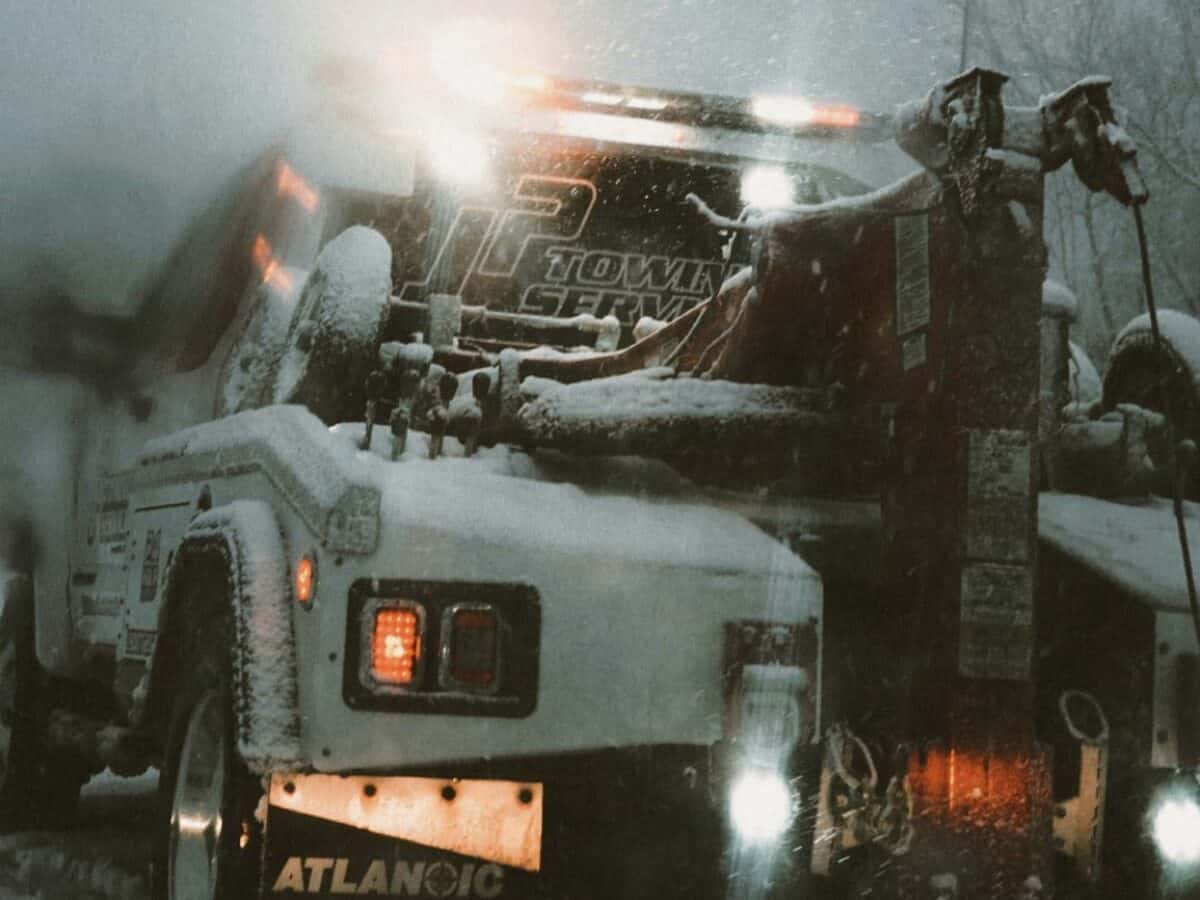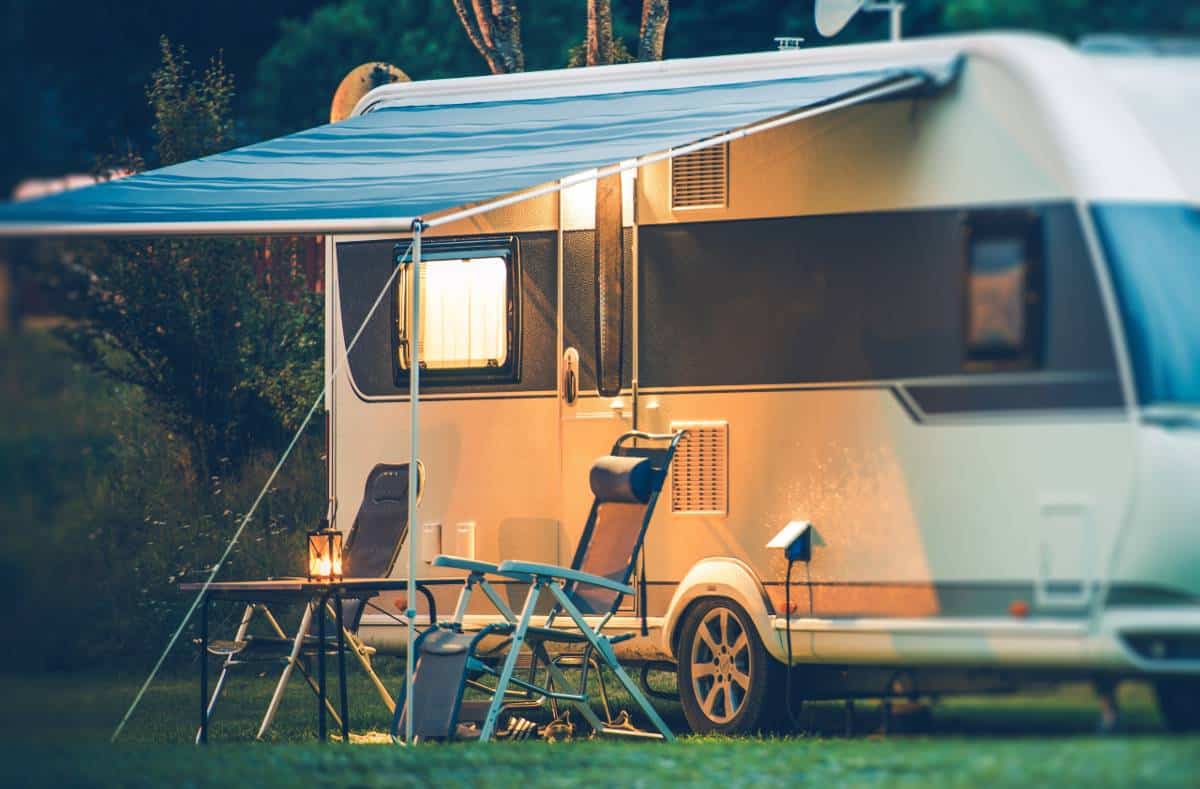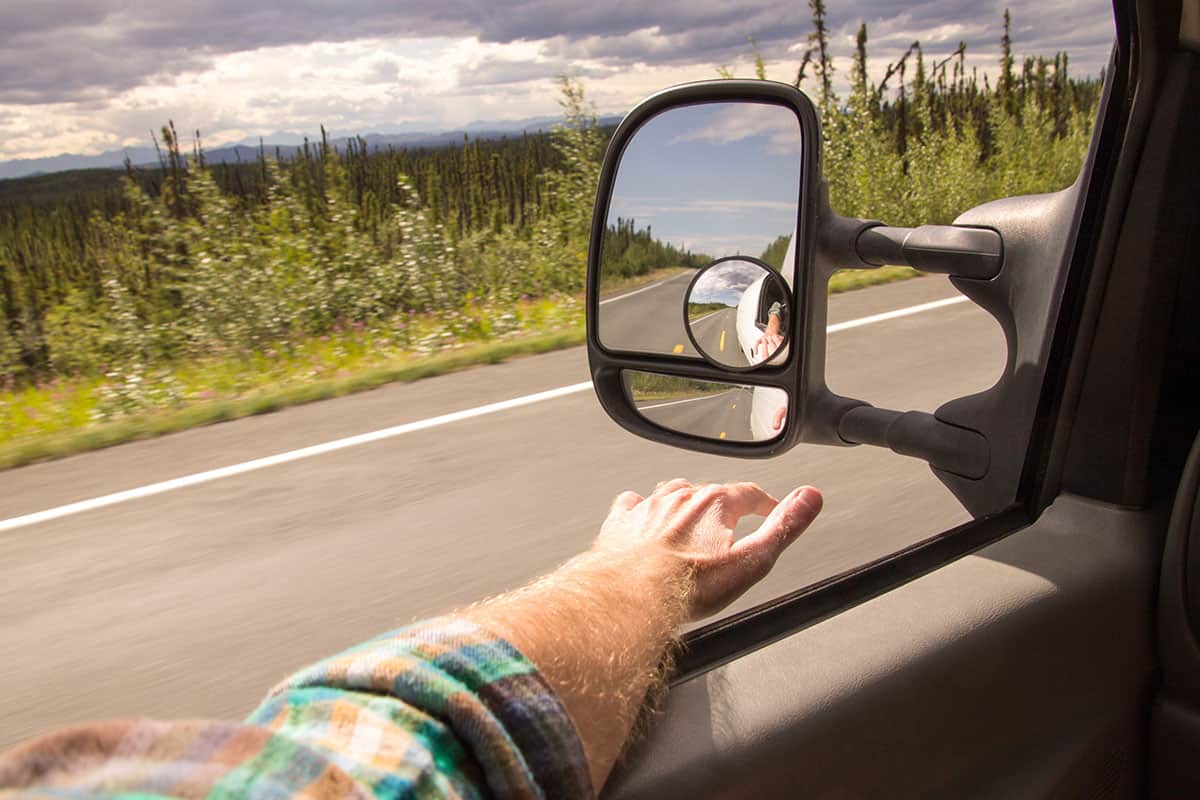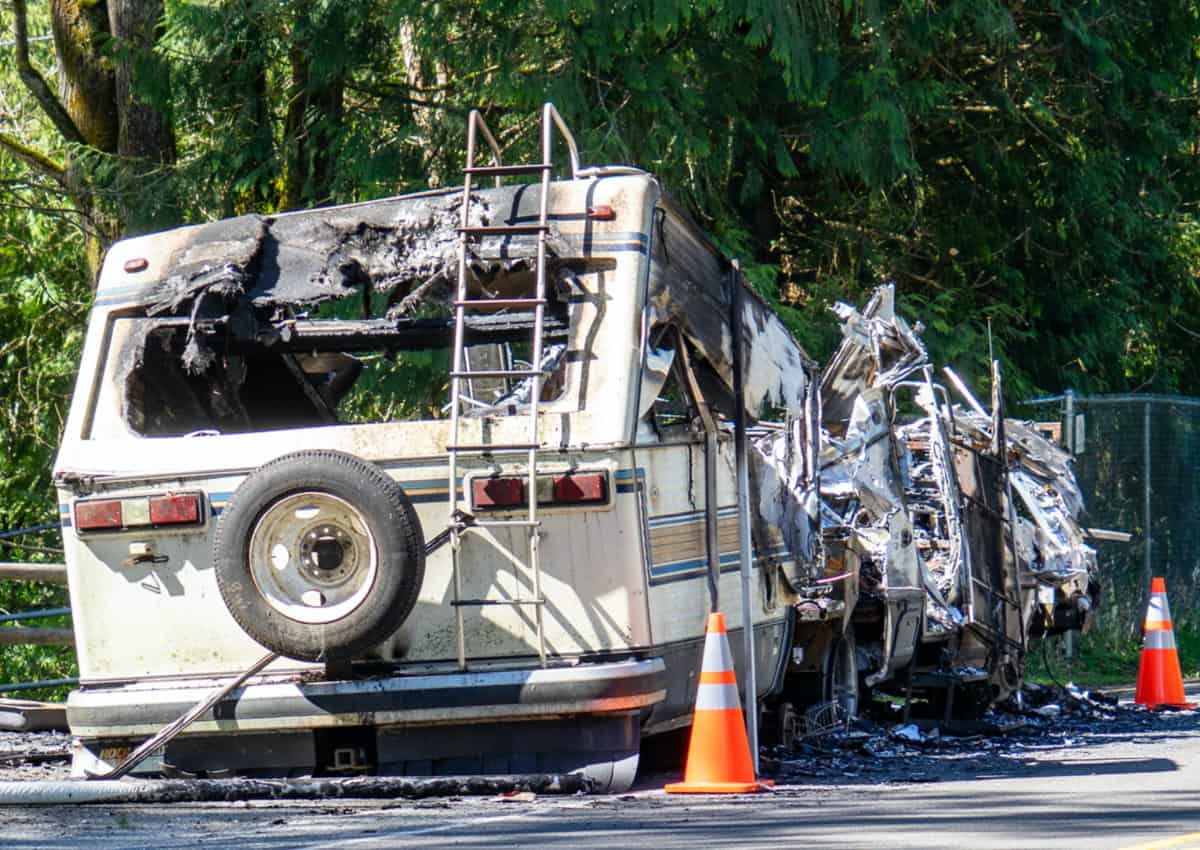Whether you own a motorhome, a travel trailer, or a fifth wheel, RV roadside assistance is a must-have. This important service ensures someone will be there to help if you find yourself broken down on the side of the road. It covers the cost of towing (something that can be extremely expensive for RVers) and often includes things like jump starts, tire replacement, and more.
Of course, you want to make sure you have the best RV roadside assistance plan for you. This requires combing through each of the available plans and deciding which one will suit you best. That’s why we’re here today.
In this article, we will discuss what to look for when shopping for RV roadside assistance plans. We’ll also present some of the best options out there, making it easy to pick and choose.
RV Roadside Assistance: Insurance Add-On vs Separate Plan
Many RVers take RV roadside assistance policies for granted because they think it’s a simple add-on to their overall RV insurance policy, and they believe that the add-on policy provides adequate coverage if they break down or have an accident. But most low-cost add-on coverages are very limited and may not provide enough protection if you’re traveling in a different state, living in your RV, or hundreds of miles from the nearest repair shop.
If you use your RV frequently, it might be beneficial to reevaluate the risks and rewards of purchasing a more comprehensive RV roadside assistance plan. RVs are not as easy to tow or repair as a car, so finding the right type of repair service can be challenging. The more remote and desolate your location, the harder it’s going to be to find RV service.
Furthermore, being stranded on the side of the road in your RV is a sickening, desperate, and hopeless feeling. Because of this, we highly recommend carrying RV roadside assistance coverage beyond what your insurance company offers.
Related: RV Warranties vs RV Insurance
What to Look For in RV Roadside Assistance Plans
Almost all the RV roadside assistance policies include some sort of fuel delivery, lock-out assist, tire change, and battery jumpstart. But even these basic services can vary from policy to policy, so read the details carefully to ensure you are getting what you actually want and need.
Who and What is Covered?
First, be sure to find out which vehicles and drivers are covered under the plan you are considering. Most policies cover a single travel trailer, fifth wheel, motorhome, van, auto, motorcycle, boat trailer, or bicycle, but some will also cover multiple vehicles and/or RVs as well as horse trailers, sport and utility trailers, and tow dollies.
Most policies cover the member and spouse, but some also extend their coverage to children up to 24 years of age. Another point of differentiation is that some policies only offer RV roadside assistance when a covered driver is in the RV, while other policies offer RV roadside assistance when the member (or covered driver) is using any vehicle they own, rent, lease, or borrow.
Where Are You Covered?
You’ll also want to learn where services can be accessed. Some policies are limited to the continental US only. Others cover RVers traveling in Canada, Mexico, and even Puerto Rico and the Virgin Islands. In some cases, benefits are available outside of the US but are pretty limited, so be sure you know exactly which coverages carry over when you cross the border.
Fuel Delivery
As mentioned above, fuel delivery is included in most RV roadside assistance policies. That said, most fuel delivery options are limited to two gallons. The exception? Good Sam will deliver up to five gallons of gas. If you’ve ever driven across West Texas (or many other remote areas of the country), you know that two gallons of fuel isn’t going to get you to the next gas station in most RVs, but five gallons might!
Tire Changes
Most policies include tire change services. However, many RVs don’t have a spare tire on board, so if the person providing the roadside assistance doesn’t bring a tire with them, this service is useless. If you don’t carry a spare, make sure you know whether or not the policy includes tire delivery along with the replacement service.
Delivery of Other Fluids
Fuel isn’t the only fuel that can get low. You could be stranded because you need other fluids such as transmission fluid, engine oil, or brake fluid, etc. Unfortunately, only a few policies will deliver fluids besides fuel, so this is something you’ll want to look into as well.
Towing Service
One major point of differentiation that could help you decide which policy is the right one for you is the towing policy. While all RV roadside assistance plans that we know of do include towing, many policies limit the distance they will tow an RV to just 15 miles. Basically, their service is designed to get you and your RV safely off the side of the road, but not necessarily to tow it to a repair shop. Any extra distance over 15 miles would be your responsibility, and towing an RV can be quite expensive.
That said, both Good Sam and Coach-Net offer unlimited towing to the nearest service center. This one benefit (if you ever need to have your RV towed) could easily pay for a lifetime of RV roadside assistance.
Winching Service
Some policies also offer winching services. You may not need to be towed down the road, but you may need to be winched out of a ditch or out of mud, sand, or snow.
I used this service one time myself when I got stuck in the mud. The tow driver also got stuck, and both of our rigs needed to be winched out of the mud by an even larger tow truck. They moved our RV less than 200 feet, and the bill (which was thankfully covered by our policy) would otherwise have been over $700. As I said, towing an RV can be expensive.
Trip Interruption Coverage
Good Sam, Coach-Net, and a couple of others offer “Trip Interruption” insurance as part of some of their roadside assistance packages. Trip Interruption covers extra expenses you might encounter if you are more than 100 miles from your home or domicile if in an accident. In some cases, if the vehicle is broken down, the insurance covers hotel, meals, and rent-a-car expenses up to a set dollar amount.
Emergency Referral Services
In addition to Trip Interruption, Good Sam also offers Emergency Referral Service to help stranded RVers who may find themselves in need of either medical or legal assistance. This coverage provides 24/7 medical/legal referrals, regardless of where you’re traveling.
When you’re far from your regular professional resources, they can help you connect with the right doctors, dentists, or even legal resources in the general area where you are located.
Discounts
In addition to all the benefits listed above, some RV roadside assistance policies offer other benefits to their plan members, from online shopping discounts to granting access to a network of campgrounds that offers discounts on camping fees.
Benefits Determine Pricing
As you can see, when it comes to RV roadside assistance plans, the difference is in the details. The more services they provide, the more the price of the policy will be impacted, so think through what your situation will require and then shop accordingly.
If A) you won’t ever need the policy to extend to your children, B) you never plan to travel outside the US, or C) you won’t need RV roadside assistance in a borrowed, leased, or rented vehicle, then there’s no reason to pay for policies in which these are predominant services. Again, the more services included in the policy, the more expensive it will be.
The point is, you’ll need to read the details of each policy to evaluate the benefits vs expense—which can range from $60 to $250 per year—to determine how those benefits fit your RVing lifestyle and your budget.

RV Roadside Assistance Providers
There are many RV roadside assistance plans offered specifically for the needs of RVers by companies that serve this community in other ways so they know the unique challenges that come with driving or towing an RV. Each company offers unique packages of protection, some more comprehensive than others, so it might require a bit of time to review all that is included in each package, what the costs are for that protection, and which policy fits your equipment, your RVing style, and your tolerance for risk.
Below are some of the top RV roadside assistance providers, as well as a bit of information on what each one includes. Hopefully, this information helps you as you try to determine which policy to purchase.
Good Sam
Good Sam is a favorite of many RVers for a reason. Their roadside assistance plans start at just $64.95 a year for the Standard package, while their Platinum package is just $79.95, and their Platinum Complete package comes in at $119.95. Choose the one that works for your needs and budget.
Coach-net
Coach-Net plans range in price from $179–$249 per year. Their policies might be a bit more expensive, but they include every benefit mentioned above and even cover you if you happen to be in a rental vehicle.
FMCA
FMCA (Family Motor Coach Association) offers Roadside Rescue. This program includes towing, fuel delivery, lockout service, tire changes, and more. The cost ranges from $129 a year for towable RVs to $159 a year for motorhomes.
RV Advisor
Roadside assistance from RV Advisor includes coverage in the US and Canada. It covers a huge range of vehicles, and dependents are automatically covered. Towing, winching, tire replacement, battery jumpstarts, and more are covered for $289 a year.
Roamly
Roamly roadside assistance plans start at just $79.99 per year. The basic plan includes unlimited towing, winching, fuel delivery, tire changes, battery service, lockout service, and trip interruption. The higher-tier plans include even more.
AAA
AAA plans vary based on where you live. Most include 100 miles of towing, tire changes, winching, fuel delivery, jump starts, and trip interruption. Cost is dependent upon your state of residence.
Always Read Reviews
When shopping for RV roadside assistance, be sure to read online reviews. It’s also a good idea to take the time to go to iRV2.com and read what other RVers are saying about the different policies.
If you only ever read the shiny marketing materials from a given company and never dig deeper, you might be disappointed with the actual services they provide if/when you have an emergency. Some RVers have experienced very poor service when they needed help, and that can be frustrating at the very least and dangerous at worst. It pays to do your homework while shopping around.
Last I checked, most of the comments in the iRV2.com forum were positive in regard to Good Sam, Coach-Net, and FMCA. Unfortunately, AAA did not fare as well with the RVing community.
There you have it, friends—everything you need to know about RV roadside assistance. In order to ensure you are covered and have all the benefits you need, make sure to be prudent and do your own due diligence when deciding which RV roadside assistance policy will fit your budget and satisfy your unique RVing needs. You’ll be glad you did!





I believe the type of RV plays a significant role. On our travel trailer, we have the roadside assistance rider on our insurance policy that extends to the travel trailer. Cost is less than $2/semi-annually. We have used it twice for tire issues, once in state about 2 hours from home and once out of state. Both times we had very quick service. Tire problems would be by far the most common need for assistance on a TT.
As a RV rental dealer for over 25 years, I’ve had a lot of experience with RV roadside assistance. Remembering these have helped get the best quality service at a reasonable cost:
1. All the roadside assistance services use mostly the same providers (local mechanics). So the service quality and price is more about the mechanic than the roadside service company. So please be kind to the roadside customer service person who is helping you. They have little control over what happens outside of their office.
2. If you are staying in an RV campground, check with the host or people at registration. They often know of someone with experience in the campground or a good local mechanic who they trust and is reasonably priced.
3. Roadside service companies ‘triage’ their dispatches, especially during the summer months. Those with safety related problems will always be helped first, over those with not as urgent needs. They do not “take the next in line”, unless they have time. So please be patient.
Be safe and well, and have a great trip in your RV!
Tried to use AAA recently and they advise they would not tow my Sprintervan and if they would for only 10 (ten) miles. I cancelled the membership immediately.
Good Sam sucks